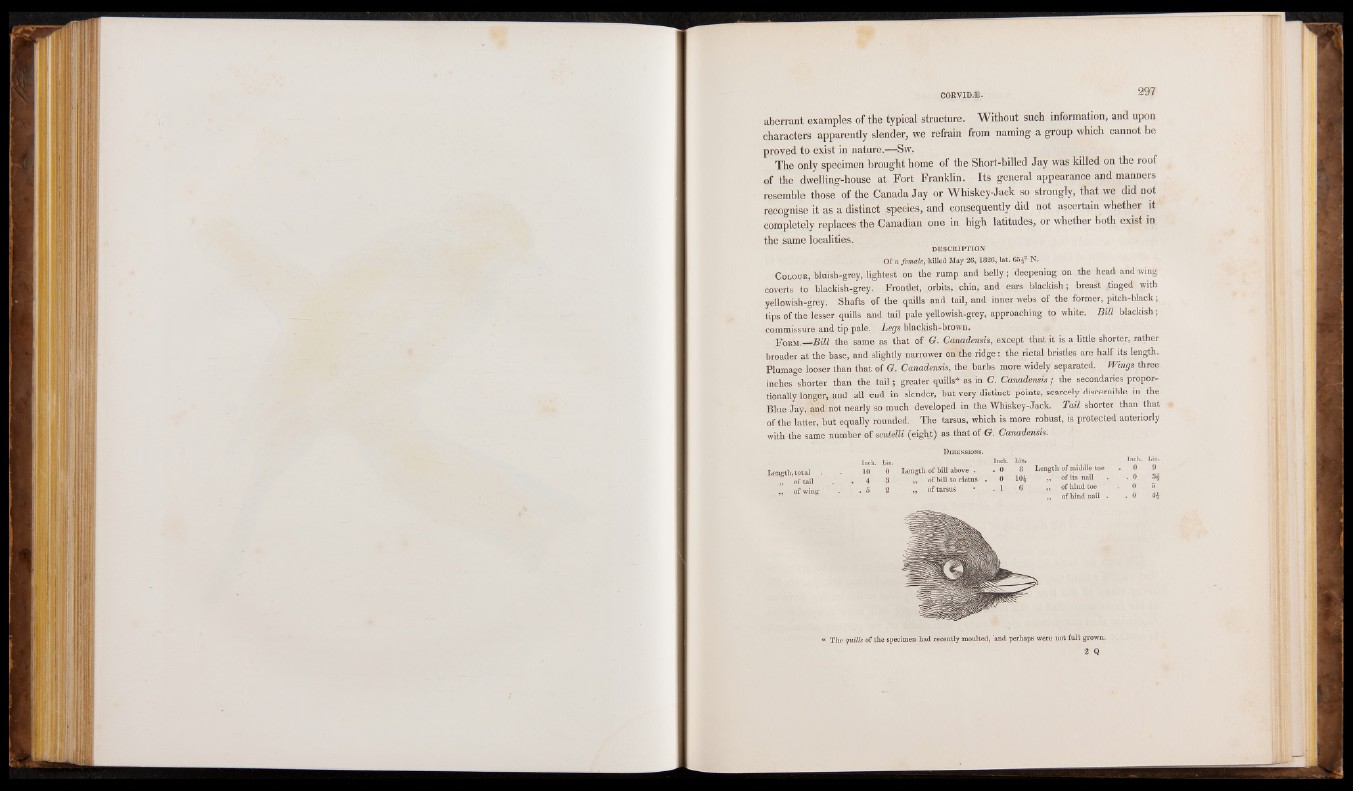
CORVID jE . 297
aberrant examples of the typical structure. Without such information, and upon
characters apparently slender, we refrain from naming- a group which cannot be
proved tp The onlye xsipste ciinm neant ubrreo.u—ghStw h,ome of the Short-billed Jay was killed on the roof
of the dwelling-house at Fort Franklin. Its general appearance and manners
resemble those of the Canada Jay or Whiskey-Jack so strongly, that we did not
recognise it as a distinct species, and consequently did not ascertain whether it
completely replaces the Canadian one in high latitudes, or whether both exist in
the same localities. DESCRIPTION
Of a female, killed May 26, 1826, lat. 65^° N.
C o l o u r , bluish-grey, lightest on the rump and belly; deepening on the head and wing
coverts to blackish-grey. Frontlet, orbits, chin, anti ears blackish; breast tinged yith
yellowish-grey. Shafts of the quills and tail, and inner webs of the former, pitch-black;
tips of the lesser quills and tail pale yellowish-grey, approaching to white. Bill blackish;
commissure and tip pale. Legs blackish-brown.
F orm.__Bill the same as that of G. Canadensis, except that it is a little shorter, rather
broader at the base, and slightly narrower on'the ridge: the rictal bristles are half its length.
Plumage looser than that of G. Canadensis, the barbs more widely separated, Wings three
inches shorter than the tail; greater quills* as in C. Canadensis; the secondaries proportionally
longer, and all end in slender, but very distinct points, scarcely discernible in the
Blue Jay, and not nearly so much developed in the Whiskey-Jack. Tail shorter than that
of the latter, but equally rounded. The tarsus, which is more robust, is protected anteriorly
with the same number of scutelli (eight) as that of G. Canadensis.
Dimensions.
Inch. Lin. „Inch. Lin. ... Inch- Lm' Length total 10 0 Length of Ml above . . 0 8 Length of middle toe . 0 9
’of tail . 4 3 ,, ' of bill to rictus . 0 10£ ■ „ • of its nail . . 0
N of wing ’ . . 5 2 „ of tarsus • . 1 . 6 . H„ ■ofhi■hdn■ail . I . 0® 4®$
* The quills of the specimen had recently moulted, 'and perhaps were not full grown.
2 Q